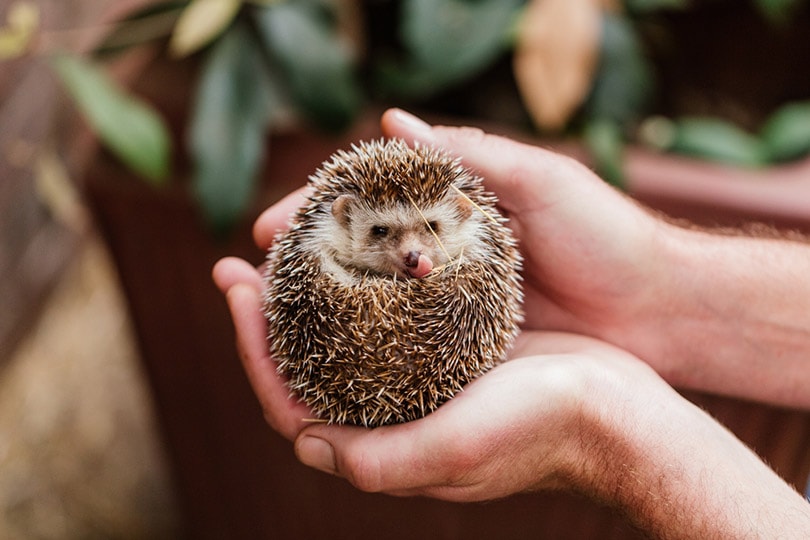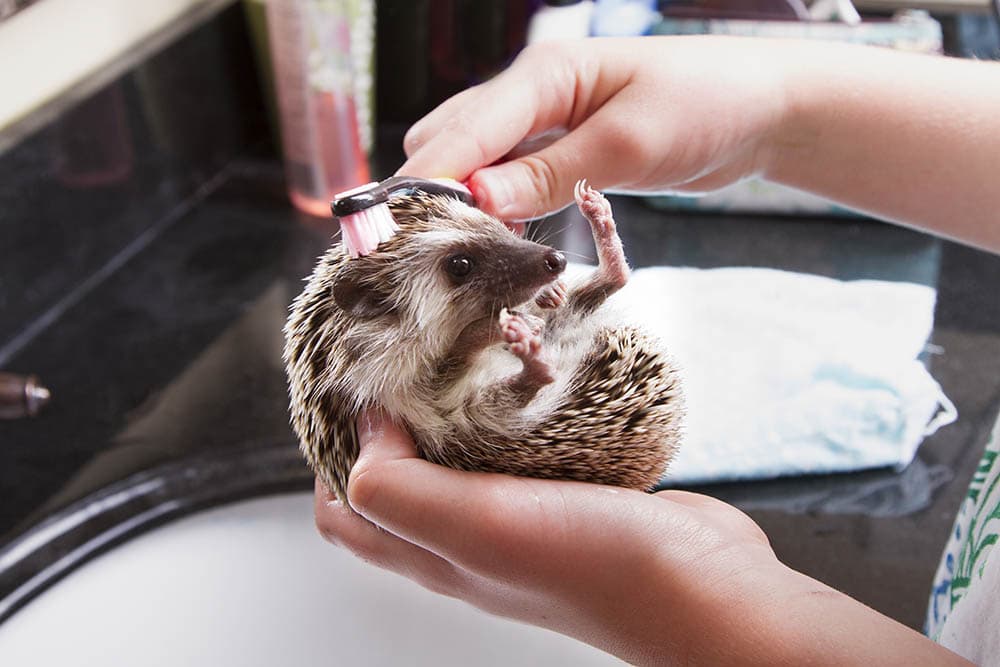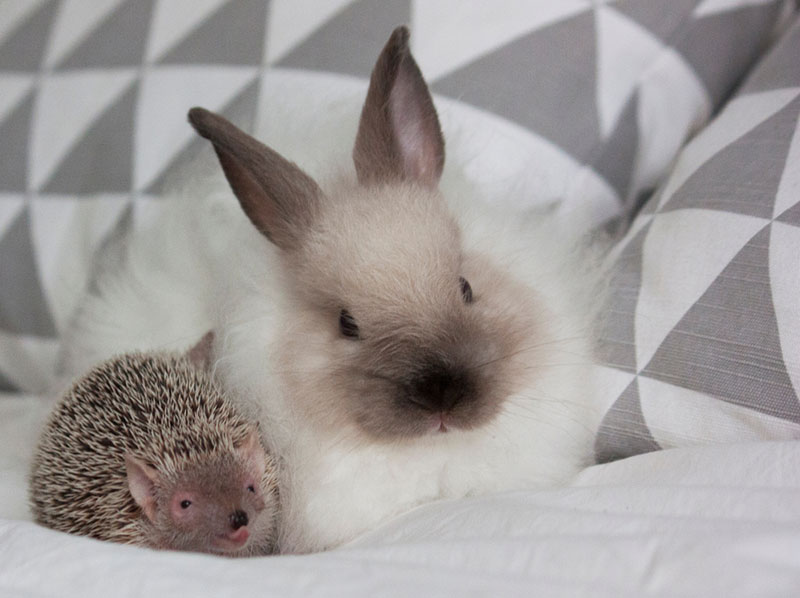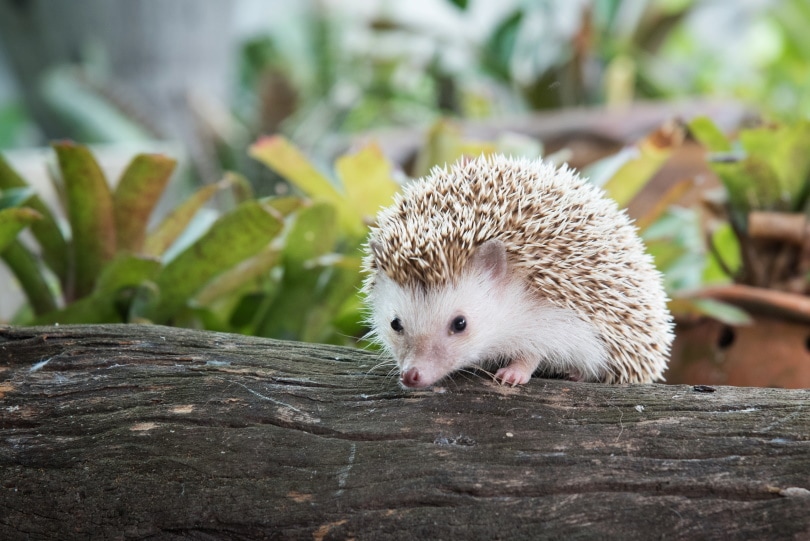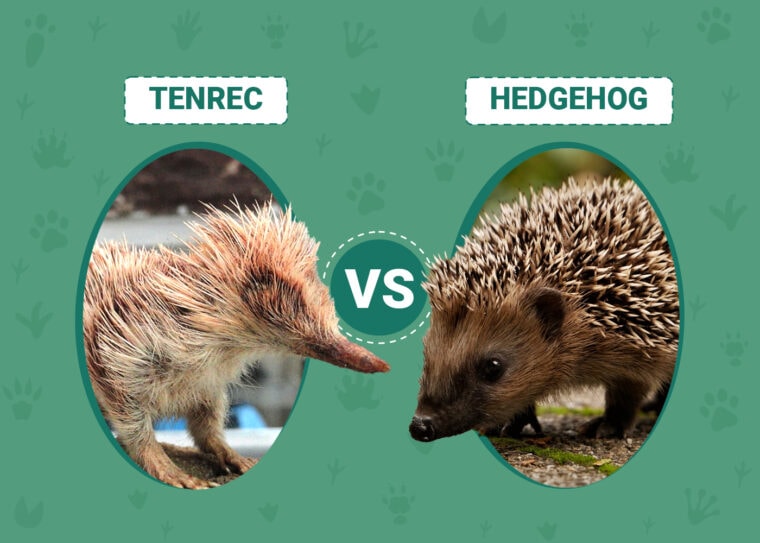
Click to Skip Ahead
They do share some similarities but, despite there being a breed of tenrec called the lesser hedgehog tenrec, the hedgehog and the tenrec are not related.
When talking about pets, the most commonly kept hedgehog is that of the African Pygmy hedgehog while the Lesser Hedgehog tenrec is the most commonly kept of this species of animal. Although there are 17 species of hedgehog and 29 species of tenrec, respectively, of the two species, we will be comparing the two most commonly kept species.
The hedgehog is a spiny mammal. It is an omnivore, although the majority of its diet consists of insects. The tenrec exists on a similar diet. The two do have spines but while the hedgehog looks quite plump and round, the tenrec has a similar body and shape to a rat. When socialized and regularly handled, both of these spiny animals make good pets. Read on to learn more about both and to see whether one is a better option as your next pet.
Visual Differences

At a Glance
 Tenrec Overview
Tenrec Overview
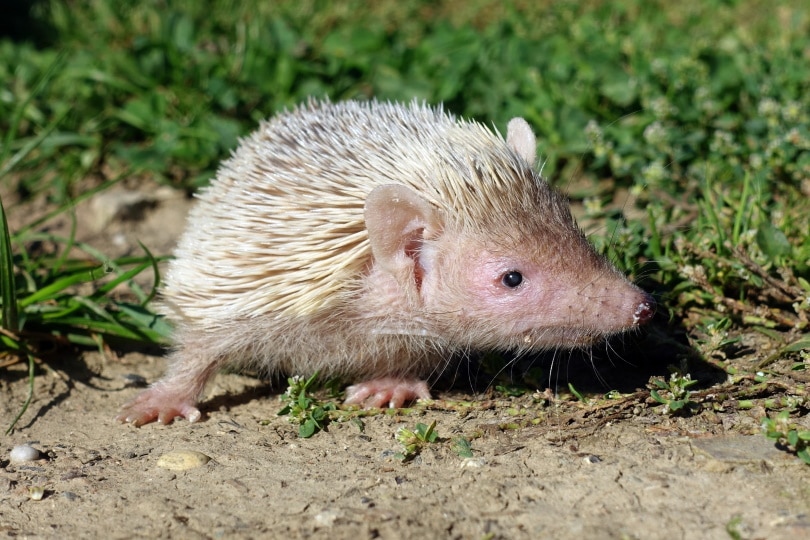
In The Wild
Tenrecs come from Madagascar and its surrounding islands. They are insectivores and hunt using excellent senses of smell and hearing. There are 29 species of this spiny mammal, including the Lesser Hedgehog tenrec.
Characteristics & Appearance
Although the tenrec does have spines and has the same long, thin legs, as a hedgehog, it is closer to a shrew or vole and would look more like a rat if it had no quills. They have a long, narrow snout, like a rat, and five toes on each paw. Their toes are long and enable them to climb efficiently. Sexing a tenrec is difficult because their genitalia are kept hidden inside their body.
Behavior And Handling
The tenrec is kept as a pet, although it is difficult to find a reputable breeder. Despite this, it is not considered an especially friendly pet. One may tolerate being regularly picked up and handled if it has experienced it from a young age and over a prolonged period, but your tenrec may never want to be held. One area where the tenrec differs from the hedgehog is how it defends itself. When threatened, the tenrec adopts an aggressive stance and will point its snout towards the threat. It won’t curl up and won’t back down until the threat is gone.
Diet
The tenrec is an omnivore and in the wild, they feed what the opportunity brings, which is mostly small insects, but their diet can range from small mammals such as baby mice to pieces of fallen fruit.
Under human care, the tenrec is mostly an insectivore, eating primarily and almost solely insects. Kept as a pet, the tenrec is considered a picky eater that will need to have its diet supplemented with some fruit and vegetables.
 Pygmy Hedgehog Overview
Pygmy Hedgehog Overview
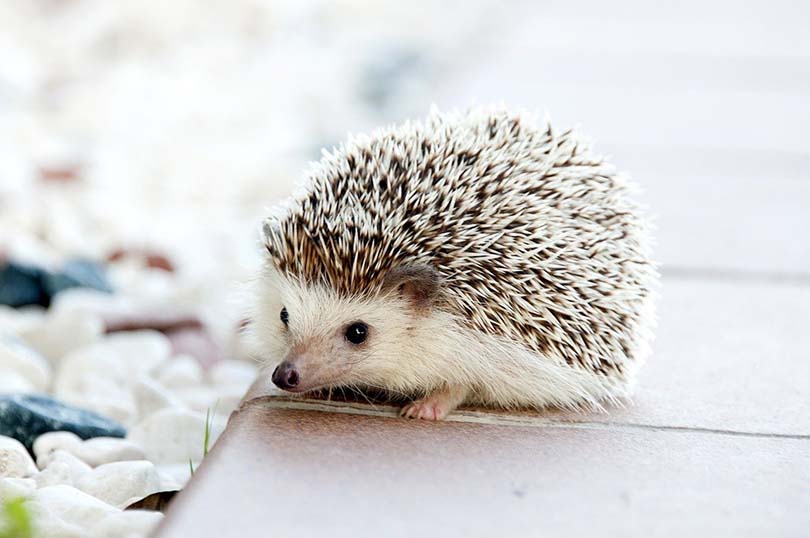
In The Wild
The African Pygmy Hedgehog is the most commonly kept hedgehog species because it is smaller, tamer to handle, and easier to care for than other species. As the name suggests, it comes from Africa and can be found in countries across the continent. It commonly lives in grasslands where it feeds mostly on insects, but lizards, frogs, snakes, small mammals, seeds, vegetables, and fruits are also a part of their diet. They are nocturnal and are considered solitary animals that will even shun the company of other Pygmy hedgehogs.
Characteristics & Appearance
The hedgehog is plumper and rounder than the tenrec and while it has five toes on each back foot, it only has four toes on its front feet. Their toes are shorter and fatter which means that they are not as adept at climbing. Hedgehogs can and do still climb, but only when necessary. They are prone to falling off logs and other ledges especially when they try to descend. However, they are capable of scurrying several miles every night, even though they do not reach speeds greater than 5 miles per hour.
Behavior And Handling
The hedgehog is not a domesticated animal and, like the tenrec, it will not usually make a cuddly or loving pet. It may tolerate being handled after some time and work on the owner’s part, but if you are considering buying one, remember that it uses its sharp quills as a means of defense and if it gets scared.
Diet
Like the tenrec, the hedgehog is classed as an omnivore. In the wild, it would eat a variety of insects, small reptiles, and mammals, but they may also pick up some fallen fruit to eat.
In captivity, the hedgehog needs to be given a diet of gut-loaded insects but this can be supplemented with cat food or dog food.
What Are the Differences Between Tenrecs & Hedgehogs?
Appearance
There are some very obvious similarities between these two species of animal. The most obvious similarity is that they both have spines that are used as a means of defense and to deter predators. They also both have long, skinny legs. However, the tenrec has a longer and skinner snout. It tends to be less round than a hedgehog and has a body shape that is likened to that of a rat more than a hedgehog. It is also smaller than the pygmy hedgehog, usually about an inch shorter in length and half the weight.
Bathing Requirements
One difference that pet owners need to be aware of is that while both animals need regular baths, the types of bath given usually differ. A hedgehog benefits from a water bath, especially because it cannot control where or when it poops and tends to walk through it. It should not be given a sand bath because it has external genitalia and can get a Urinary Tract Infection if sand gets in. A tenrec benefits from a sand bath and can use the grains of sand to properly exfoliate the skin while cleaning. Its genitalia are inside so there is much less risk of UTIs and the tenrec is a cleaner animal that tends to poop in just one or two spots in the cage.
Lighting And Heat Requirements
The hedgehog needs a Ceramic Heat Emitter. This emits heat but no light, which would confuse the nocturnal animal. If the hedgehog gets too cold, it can force it into hibernation. Tenrecs do not, strictly, hibernate, but they do enter a state of torpor. Vital signs slow drastically but, while a hibernating animal cannot be roused, one in torpor can wake groggily before going back into its torpor state. With that said, hedgehogs can enter hibernation at temperatures below 85, while tenrec will not usually torpor until they get to temperatures lower than 75. This means that the ambient temperature in the enclose might be enough without having to worry about special heat lamps.
Which Breed Is Right For You?
Hedgehogs and tenrecs are kept as pets, although neither is thought of as being a loving or cuddly pet. It can take a lot of time and frequent handling to convince either of these spiny animals to let you pick them up. Although the two species look similar, they are not related, and if it weren’t for the quills, they would look very different from one another. They also differ in their domestic requirements, with the hedgehog usually having greater lighting and heating demands than the slightly less needy tenrec. However, the tenrec is a lot more difficult to acquire, with few recognized and reputable breeders.
See Also:
- Is a Hedgehog a Mammal or Marsupial? The Surprising Answer
- Chinchilla vs Hedgehog: Which Pet is Best for You?
Featured Image Credit: Top – Eric Isselee, Shutterstock | Bottom – evakerrigan, Shutterstock


